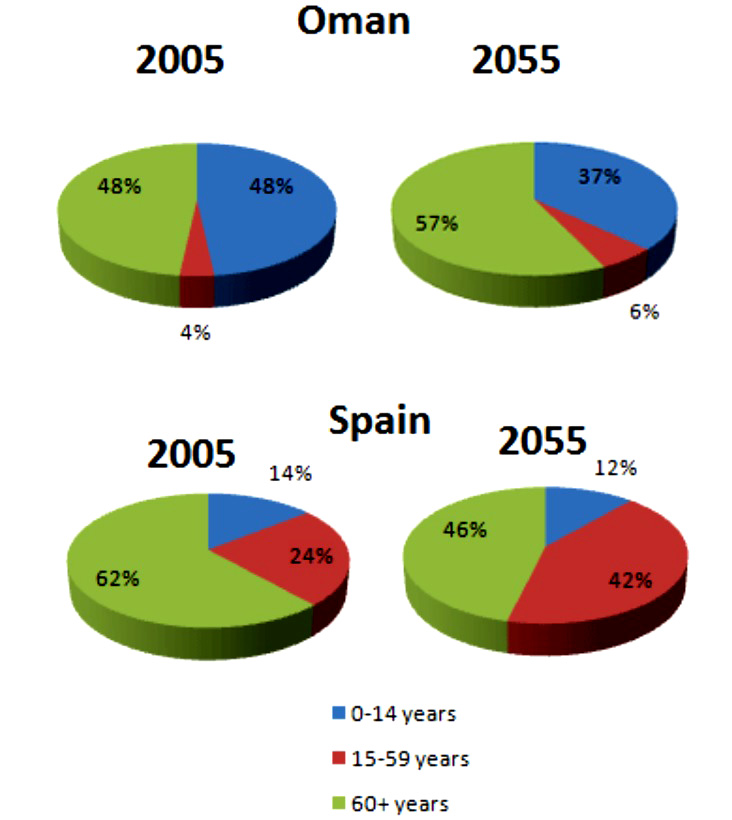The pie charts below give information on the ages of the populations of Oman and Spain in 2005 and projections for 2055. Summarise the information by selecting and reporting the main features and make comparisons where relevant.
Write at least 150 words.

More and more people in the city live in homes with small spaces or no outdoor areas. Do you think it is a negative or positive development?
Give reasons for your answer and include any relevant examples from your own knowledge or experience.
Write at least 250 words.
WRITING TASK 1
The pie charts show significant comparison of age groups in Oman and Spain. Initial statistics are concerning 2005 and some predictions about the ages of the populations are made referring to 2055.
It is apparent from the charts people who were under consisted half of the population of Oman in 2005. 48% and a negligible 4% of Oman population were 15-59 and 60 and over respectively. However, following a half century is assessed to bring staggering alteration of dominant positions in Oman population. Proliferation from 48% to 57% can be cited as example which will make 15 to 59 year old Oman people dominant in 2055.
However, in 2005, 62 percent of Spanish people were between 19 and 59. Predictions about that status illustrate not significant alterations in the dominance of age groups.
Overall, it is important to note that, in 2055, proportion of people under 14 will slide away in both countries. However, this trend will cause middle aged people to take over dominant position solely in Oman.
(169 words)
WRITING TASK 2
With the growing population of cities, more city dwellers are having to live in cramped houses with no outdoor spaces. In my opinion, this trend brings about both positive and negative aspects, however, I believe its advantages outweigh the disadvantages.
On the one hand, there is no denying the fact that when living in a tiny home without big windows and sufficient green space nearby, residents will be prone to some negative feelings. This is due to the fact that residents do not have any space for recreational activities, such as watering flowers or playing with their pets, after dealing with a heavy workload or stressful day. They therefore may feel exasperated within their apartments, and this can lead to a number of mental health problems such as depression.
However, although living in tiny houses possesses some downsides, the potential benefits are also numerous. The initial advantage is that living in a small house prevents frivolous spending on items that are only used to fill a space rather than to fulfil a function, helping people to be more disciplined with money. Along with buying less stuff because they have no room for it, they will also avoid wasting time on maintaining all that stuff. Small houses, moreover, encourage family bonding, creating an environment where family members can get organized and make the home a happy place. In comparison to larger accommodation, where there are separate rooms for each member, small homes offer a common living space for the whole family, which will provide more opportunities for the family to talk and share stories and feelings.
In conclusion, although small houses can be possibly detrimental to the occupant’s feelings, I still believe that living in limited space seems to be more beneficial to city dwellers when it comes to good financial management and family bonding.
(304 words)
